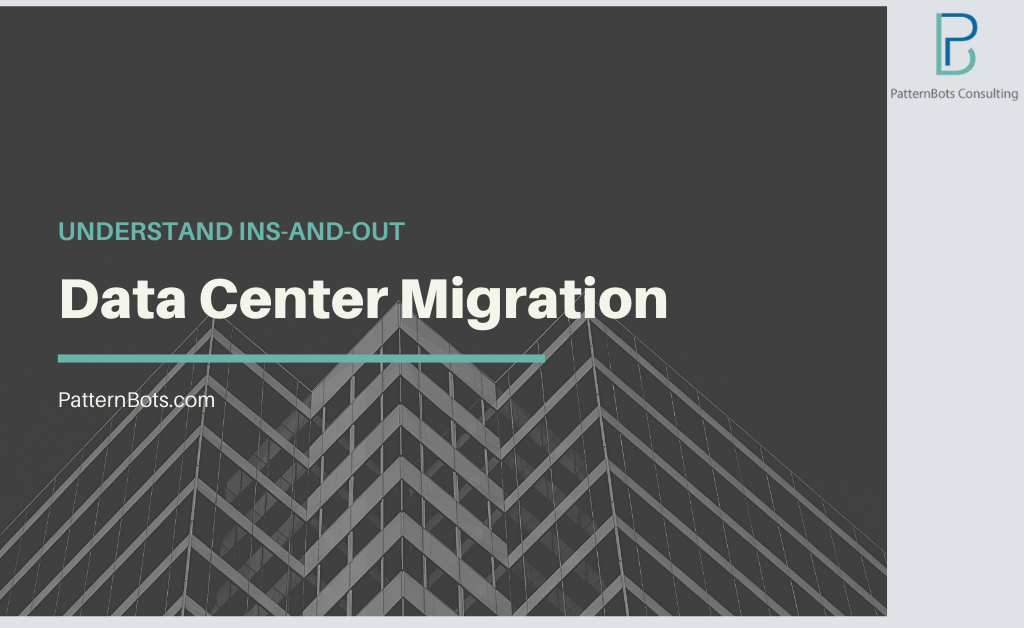
Making changes while migrating data and moving between applications or changing format while moving from one location to another are the reasons that embark on a data center relocation project. From moving data or applications to the cloud to consolidating or deleting systems and holding data or optimizing data storage for cost or ease of use. These are the few reasons which you need to think about before starting a new data center migration or relocation project.
Business planning- what type of data center migration is needed!!
Digital transformation of business means migrating traditional data to the cloud, and for most companies, it is very normal. Examples of business benefits of cloud are flexibility, agility, lower cost due to OpEx on-demand over CapEx, and freedom to think about core business value over infrastructure. Here let’s learn about three main kinds of data center migration on the roadmap.
Data Center Migration Process for Storage
There are many reasons for data migration, and companies can choose to migrate data to store elsewhere. The most common among data migration is, of course, cloud migration. This process does not involve changing data and doesn’t impact the other layers of the system. Cloud storage makes data easily accessible and easier. It makes the collaboration simple and adds a security layer. Think about what will happen if your on-premises server fails? All data will be lost or remain unusable. Cloud storage stores your data across various servers and different data centers, making you tension-free from disasters and cyber-attacks.
In the case of prices, the companies can benefit from cloud storage to get a cost-effective tiered approach that stores and holds data. For example, if you use Microsoft Azure storage, then we can say it spans from cool to hot, and it gives you an option to access data as and when required.
Migrate to the Cloud- Data Center Migration
The 2022 year is more technologically advanced and revolutionary. Many companies and the vast majority of the application is planning to move their entire data center to the cloud. In fact, in 2021, 94% of all data workload is migrated to the cloud.
Pandemic has changed the work scenario. The remote working landscape has become a new favorite, and this has accelerated the reality, and now so many companies are eager to work freely, securely, and effectively from home, and thus this has increased companies interest in safe operations.
If you are looking for lift and shift or attempting refactoring, rehosting, or replacing applications, you will need serious visibility and guidance before starting your large-scale data migration project.
Data Center Migration Plan for Applications
In some cases, a company might be moving sensitive or essential applications to the cloud but not aware of the whole cloud data center migration or discussed the same. It is ubiquitous for organizations to move applications from one premise to the cloud or from one cloud to another as part of a multi-cloud or hybrid business strategy.
The main concern is that every application introduces application logic elements to the data tier and the two use cases are not surely alike. Formating, design, processes, architecture speak the same language and workflows and make everything extremely complex. When migrating to the cloud, a company needs to handle migration sensitively.
Putting into force a Data Center Migration Plan
All data center migration plans involve a version of extract transform and load, but the plan’s foremost important pre-step. Time is changed, now data is no more seen as static, data is a dynamic beast now, and it carries a lot of risks, costs, and value. The data migration process is quite complex, and as discussed above, the data can get tangled in other applications and systems, particularly in the case of a hybrid data center. This impacts business continuity if moved carelessly as it often holds sensitive customer information and is applicable to compliance.
When it comes to data center migration, Gartner gave two precedences. First one industry experts suggest companies “disentangle data by applying correct information in governance to pace layering”. It means moving data at a slow pace, understanding all application dependencies and complexities, and seeing what is relevant within the data center. Gartner’s second suggestion to the organization is “understanding data gravity, gauge and prioritize data migration efforts”. Understanding how data and applications interact with one another data center replacement project is a new opportunity for success. Here are the three main issues to be kept in mind:
Expertise: Outsource if you don’t have the experts or technology in-house. Make use of free and inexpensive tools available and allow quick and easy frame or data structure of complex data center before beginning migration.
Plan: When your data plan is solid, you will need weeks and months to plan migration work. Make sure you end up with a clear vision and a full-proof plan map of your migration journey. Focus on how all parts interact.
Remember Dependencies! Cross-objects dependencies are often found and can be catastrophic for data center replacement or migration. Working on the tool will help you discover dependencies accurately and cross fear from your list.
Execute, Test, and Validate – Data Center Migration Project
Tools are a great help, but make sure whichever you use has the best way to test your data center replacement environment, ensuring both before and after metrics. Tools will help you check metrics such as SLA to see that there is no negative impact of migration and data is viable and usable in the new location before you get rid of the old system or applications.